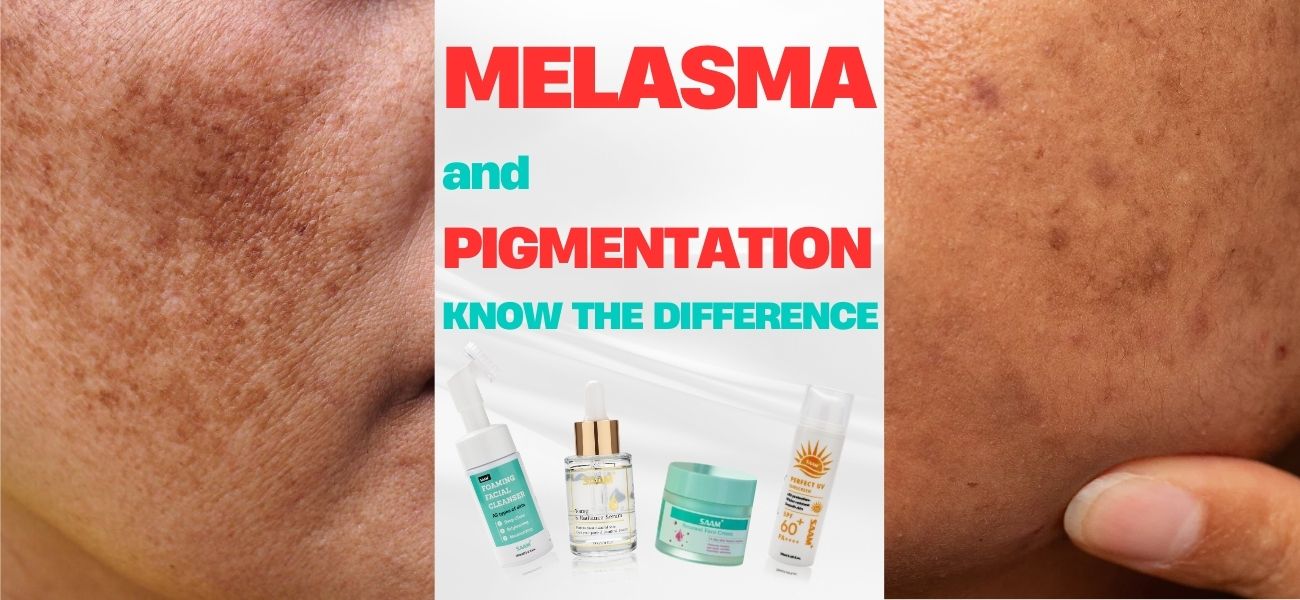
- By saammall
- May 16, 2025
- Skincare Knowledge
Everybody wants skin that’s clear and glowing. But, getting there can be tough because of melasma and pigmentation. Even though these two problems change your skin color, they’re pretty different and need special care. In this article, SAAM will help you differentiate and find the best ways to treat and prevent them.
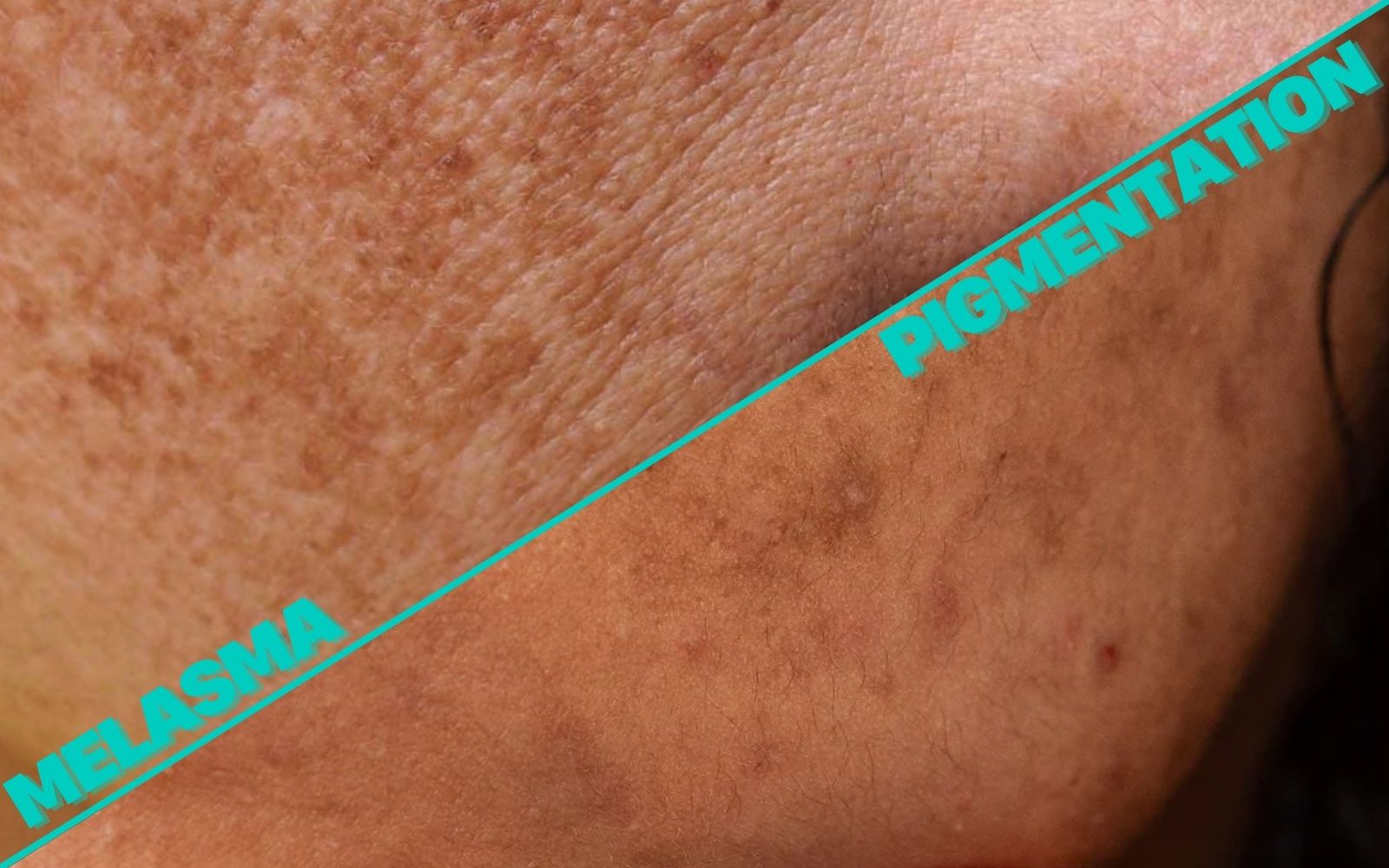
Differentiate between melasma and pigmentation
1. What is Melasma and Pigmentation?
Despite their similarities, these two skin problems have completely different definitions, requiring a deep understanding for appropriate care and treatment. So what are melasma and pigmentation?
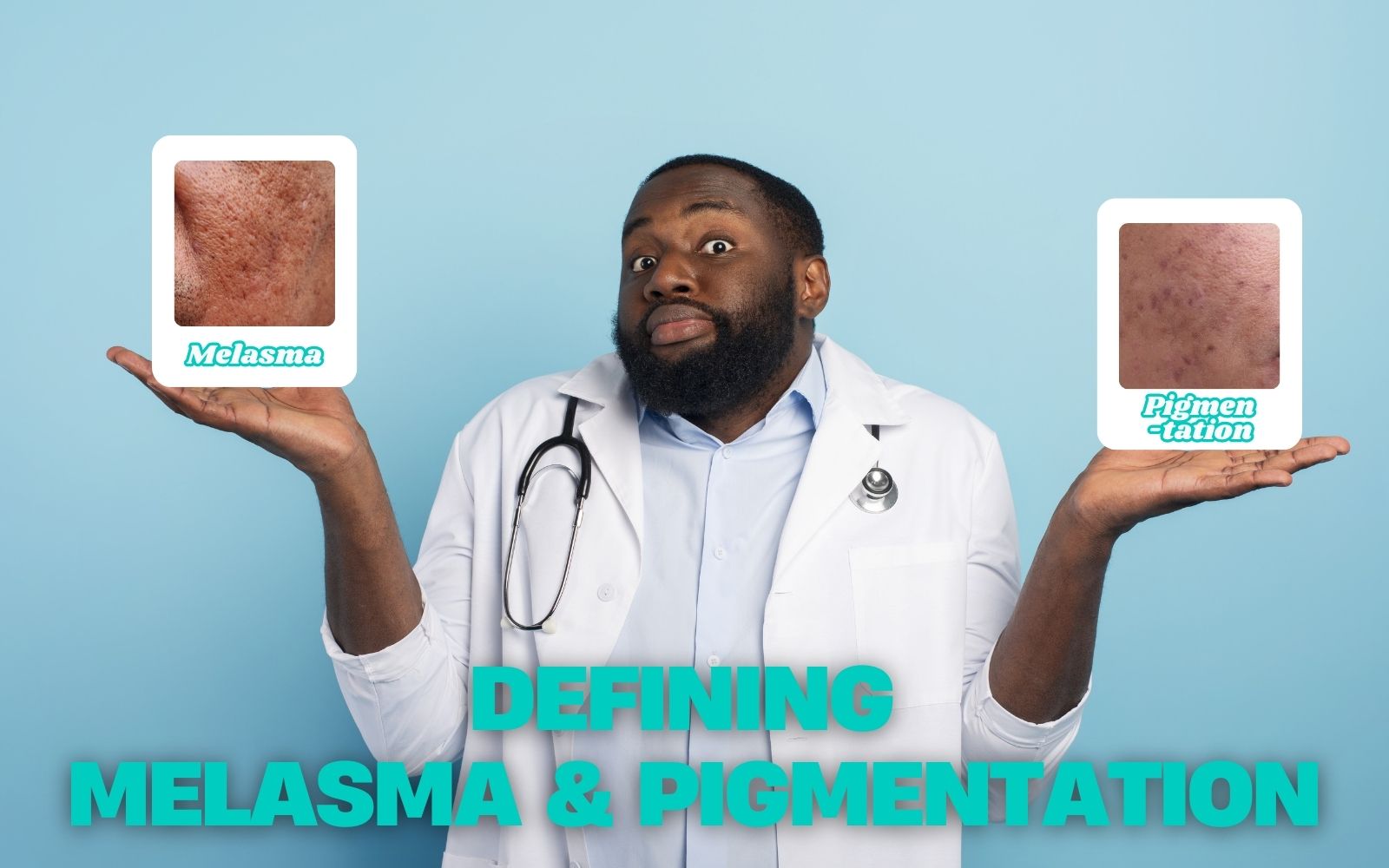
Defining these two skin problems
1.1. Defining Melasma and Its Various Types
Melasma is a common skin problem that causes brown or gray-brown patches on facial skin, usually on cheeks, forehead, upper lip, and chin. These patches are often symmetrical, meaning they appear the same on both sides of face. There are three main types of melasma:
- Epidermal Melasma: This type is easier to treat because it’s on the top layer of your skin.
- Dermal Melasma: This type is harder to treat and takes more time and money because it’s deeper in your skin.
- Mixed Melasma: This is the most difficult type to treat and requires a combination of treatments because it’s a mix of the other two types.
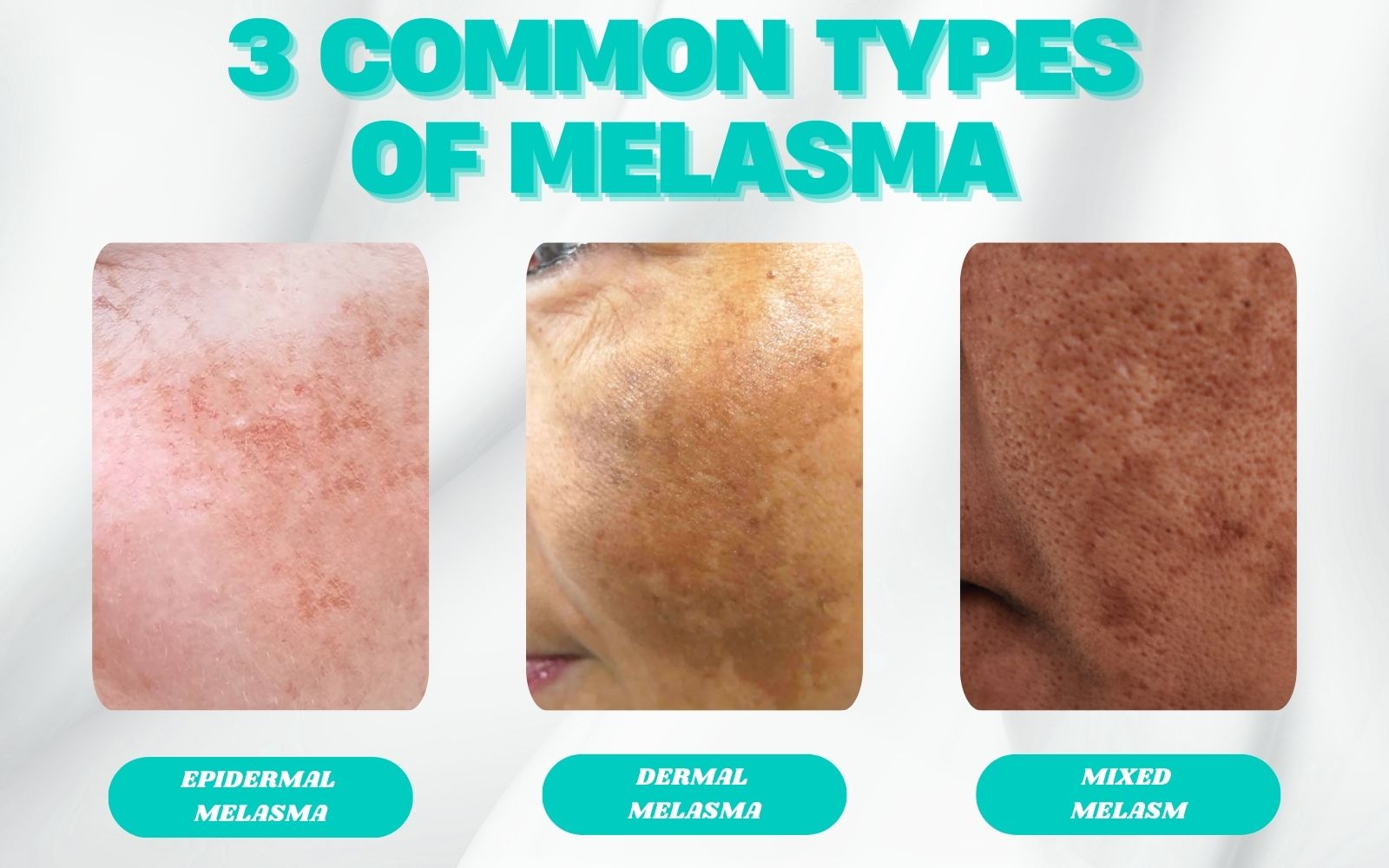
Three common types of melasma
1.2. Defining Pigmentation and Its Various Types
Pigmentation is a general term for any change in skin color caused by too much or too little melanin – the pigment that gives skin color. It can appear in many different ways and isn’t just limited to face area.
- Freckles (Ephelides): Small, flat, brown or red spots that are usually caused by genetics or sun exposure
- Age Spots (Lentigines): Larger, flat, brown spots that appear on older people due to sun exposure
- Post-inflammatory Hyperpigmentation (PIH): Dark spots or patches that appear after injury, such as from acne, eczema, or cuts. The spots’ color and size depend on how bad injury was
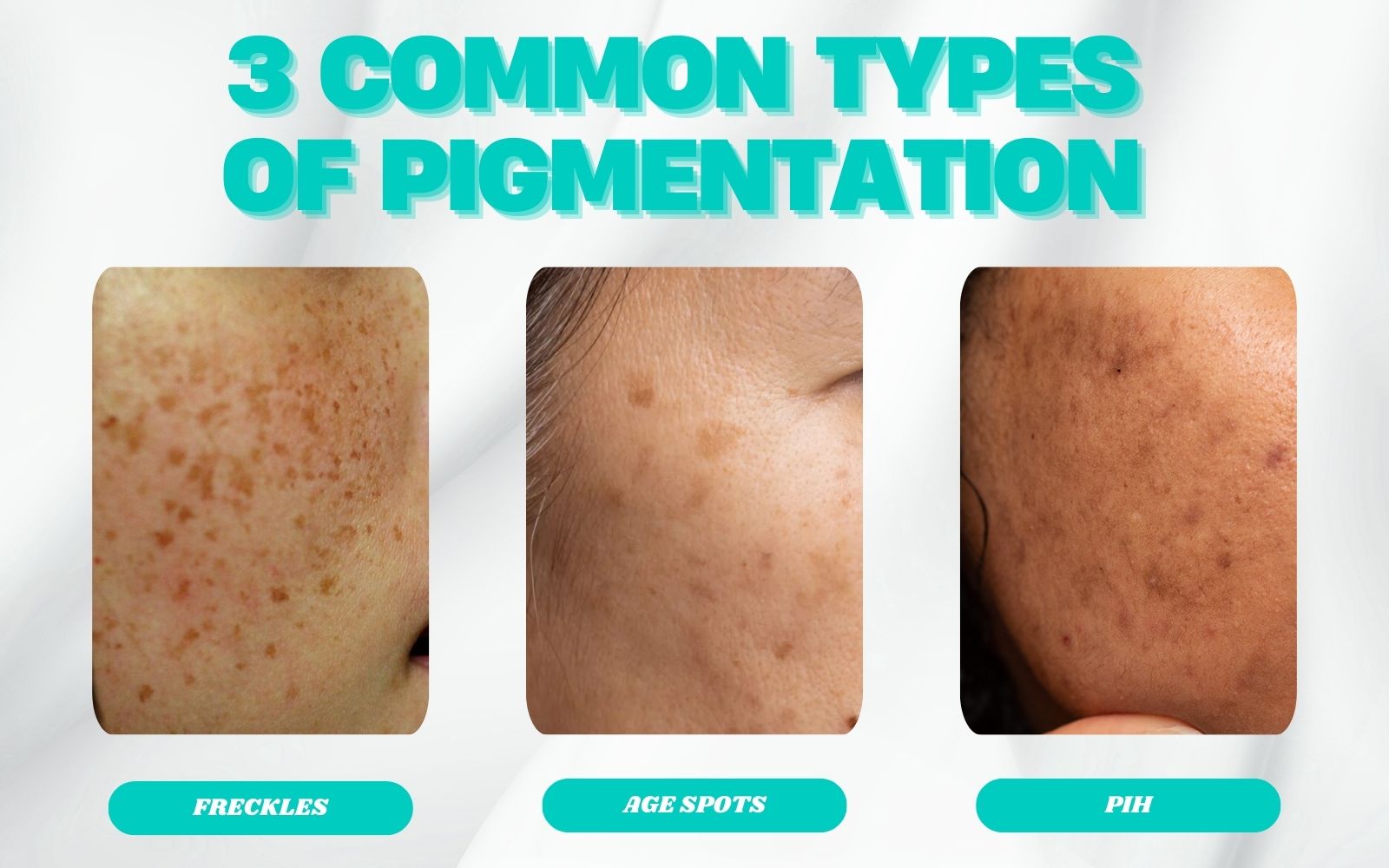
Three common types of pigmentation
2. Difference in These Two Skin Problems
2.1. Similarities and Differences Between Melasma and Pigmentation
Both are related to melanin production control and can be worsened by sun exposure. But, there are also some key differences.
| Feature | Melasma | Pigmentation |
| Main Characteristic | Large patches with clear borders | Small spots (freckles) or large patches (age spots, PIH) |
| Location | Cheeks, forehead, chin, upper lip | Anywhere on face and body |
| Causes | Hormonal changes, sun exposure, genetics | Sun exposure, aging, skin injuries, genetics |
| Color | Light brown to dark brown or gray-blue | Varies from light brown to black |
| Symmetry | Usually symmetrical | Not necessarily symmetrical |
Guide on differences between melasma and pigmentation
2.2. The Easiest Way to Tell Them Apart
Even though melasma and pigmentation are caused by melanin overproduction, you can quickly distinguish them by looking at their color and position.
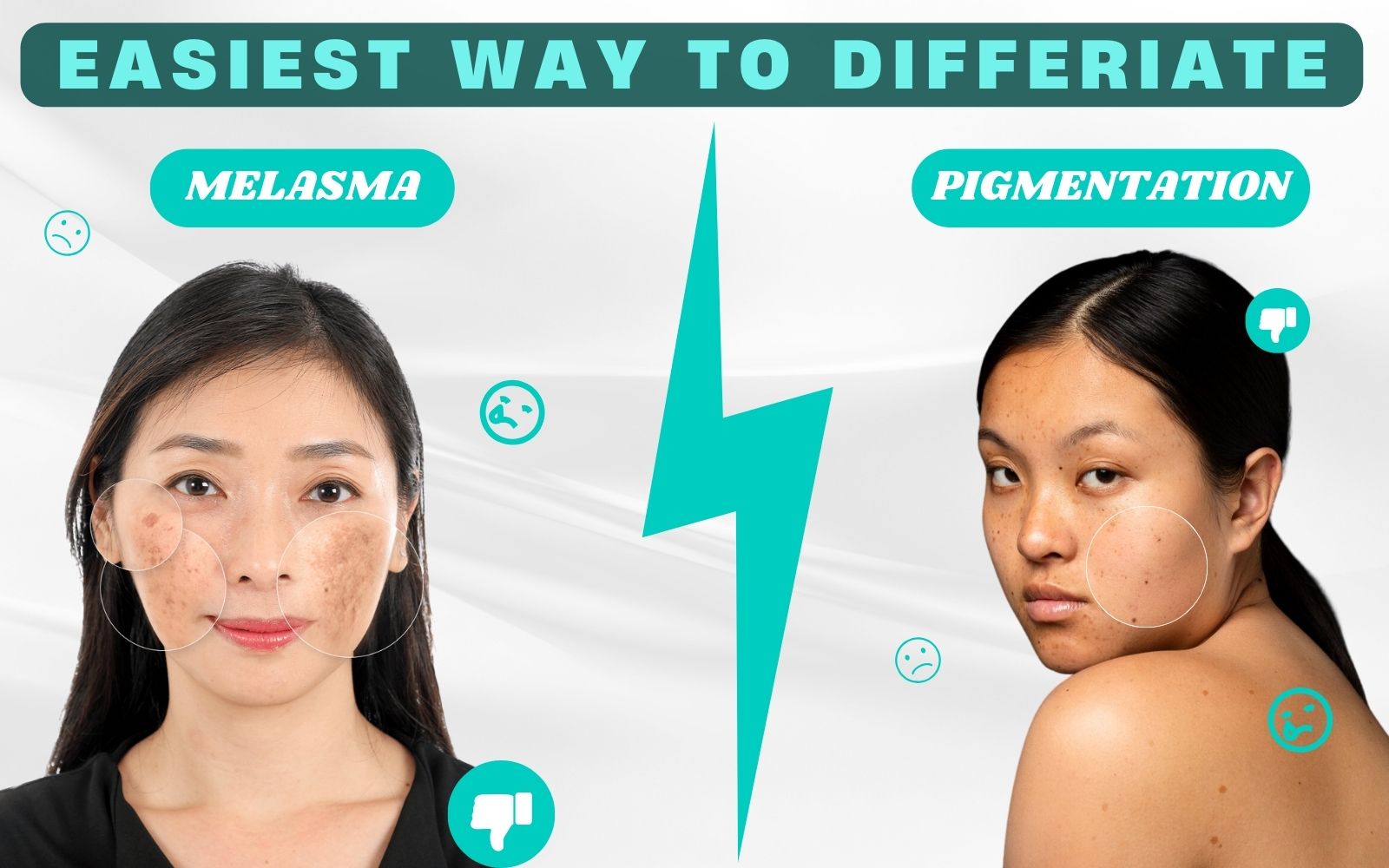
Easiest way to differentiate melasma and pigmentation
One tends to have clear borders and are symmetrical on facial skin, with an even color. The rest can appear as small spots or larger patches with uneven color, and can be found anywhere.
3. How to Treat These Two Skin Problems Effectively?
Since both melasma and pigmentation are caused by excess melanin, some treatments are similar.
- At-home removal with products containing Kojic Acid, Alpha Arbutin, Niacinamide, or Retinoids. These ingredients help to reduce melanin production and promote skin cell turnover
- Advanced treatments like laser therapy, chemical peels, or Mesotherapy. These can be more effective for stubborn cases
- Daily use of broad-spectrum sunscreen is essential to prevent them from getting worse
- Chemical exfoliation with AHA/BHA to remove dead skin cells and brighten your complexion
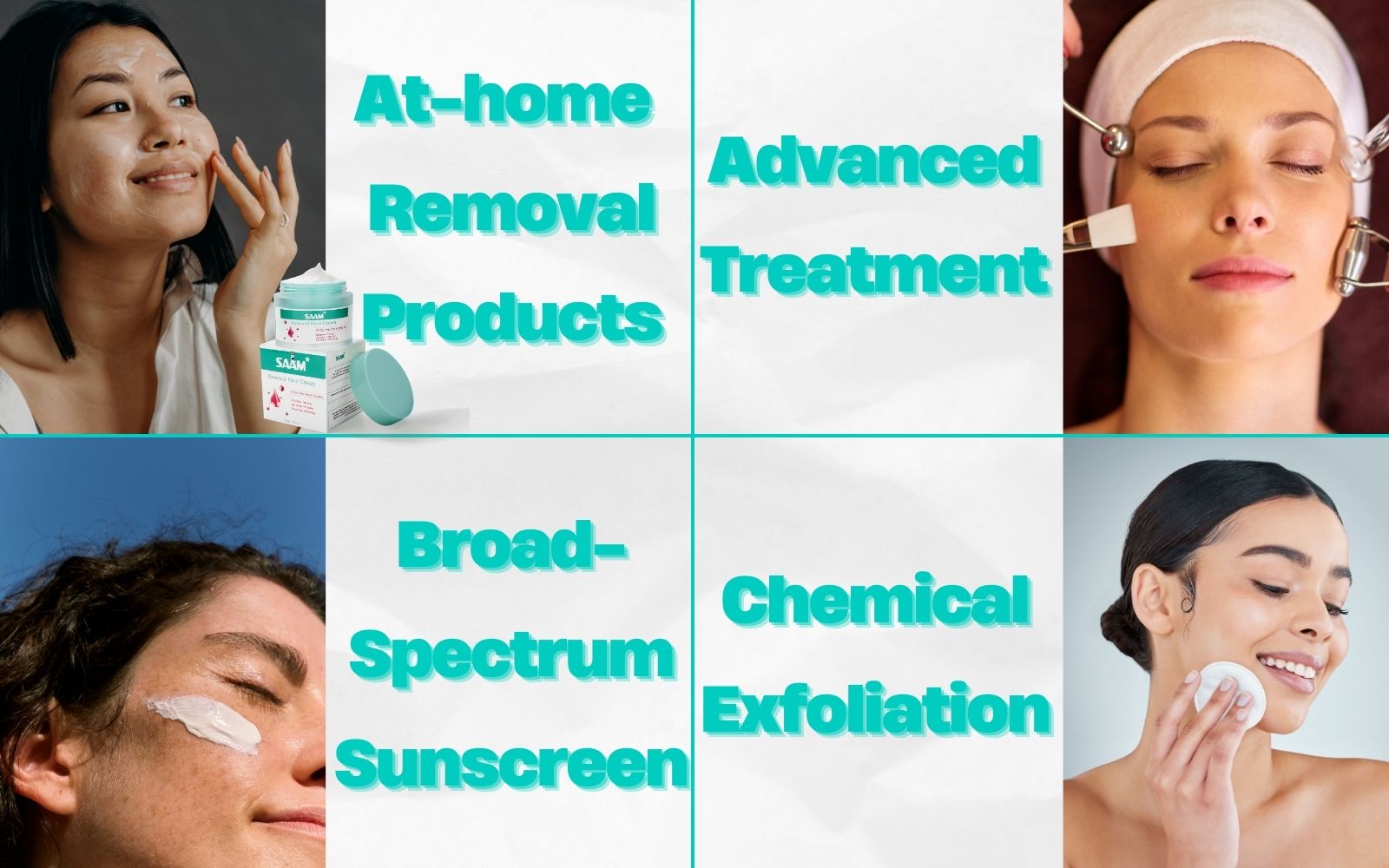
Improved ways to achieve even skin tone
4. Key in Skincare Routines for These Two
While some treatments for melasma and pigmentation are similar, SAAM recommends a few specific steps for each condition.
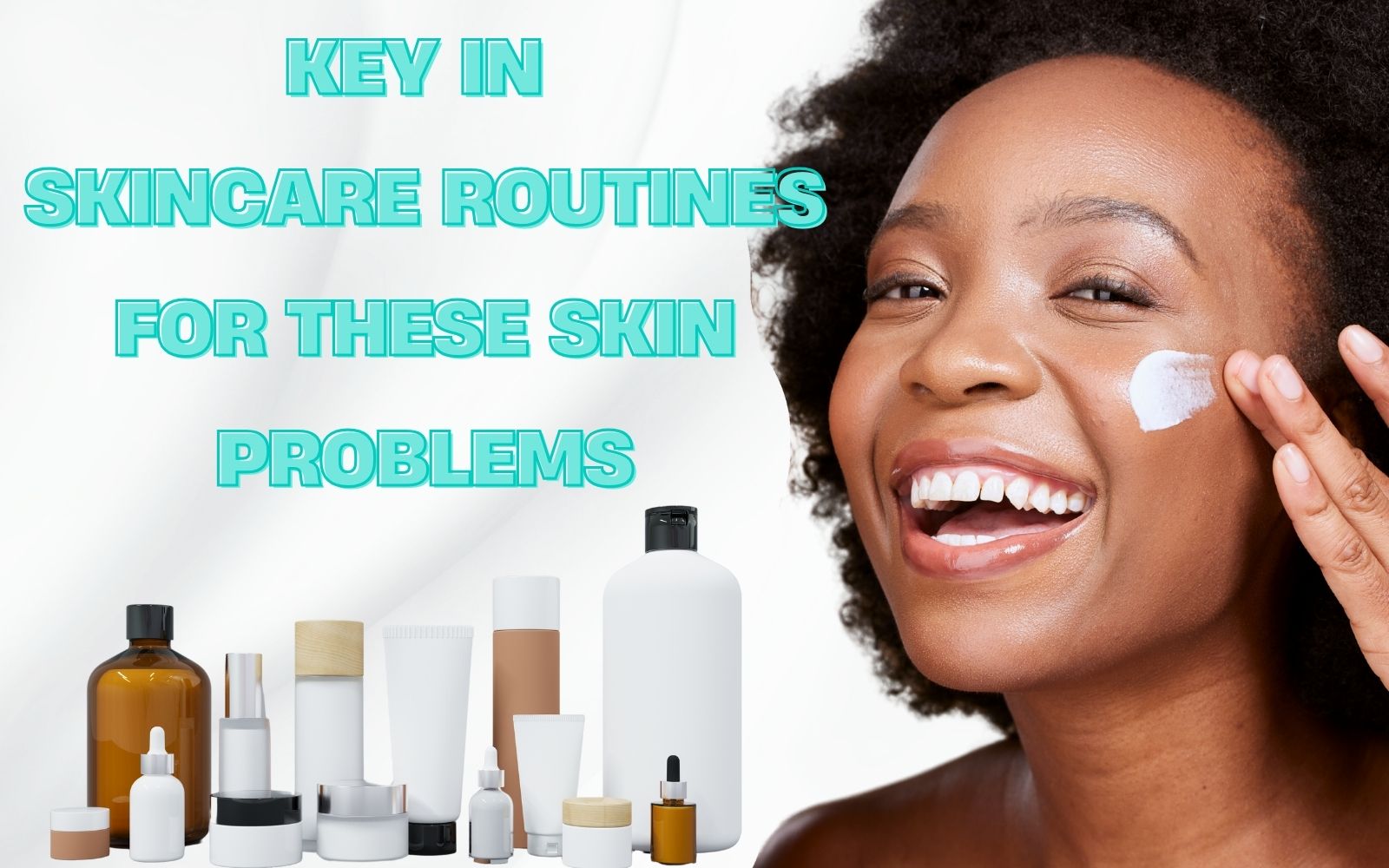
Key in skincare routine for melanin control
4.1. Adjusting Your Skincare Routine for Melasma
To effectively remove melasma, it’s important to adjust daily skincare routine. Here are some detailed steps:
- Gentle cleansing by using a cleanser that’s free of alcohol, harsh fragrances, parabens, and strong detergents, prioritizing products with a balanced pH to maintain skin’s natural barrier
- Hydrating serum with moisturizing ingredients like Hyaluronic Acid, Ceramides, and Peptides, prioritizing products that don’t clog pores
- Choose treatment cream with ingredients that inhibit melanin production, such as Alpha Arbutin, Kojic Acid, Niacinamide, Vitamin C, Retinoids (Retinol, Tretinoin), noting ingredient concentration suitable for skin types and conditions
- Apply broad-spectrum sunscreen with SPF 30 or higher, protecting against both UVA and UVB rays, choosing one with a texture suitable for skin, choosing products free of fragrances and parabens, applying sunscreen 15-20 minutes before going outside
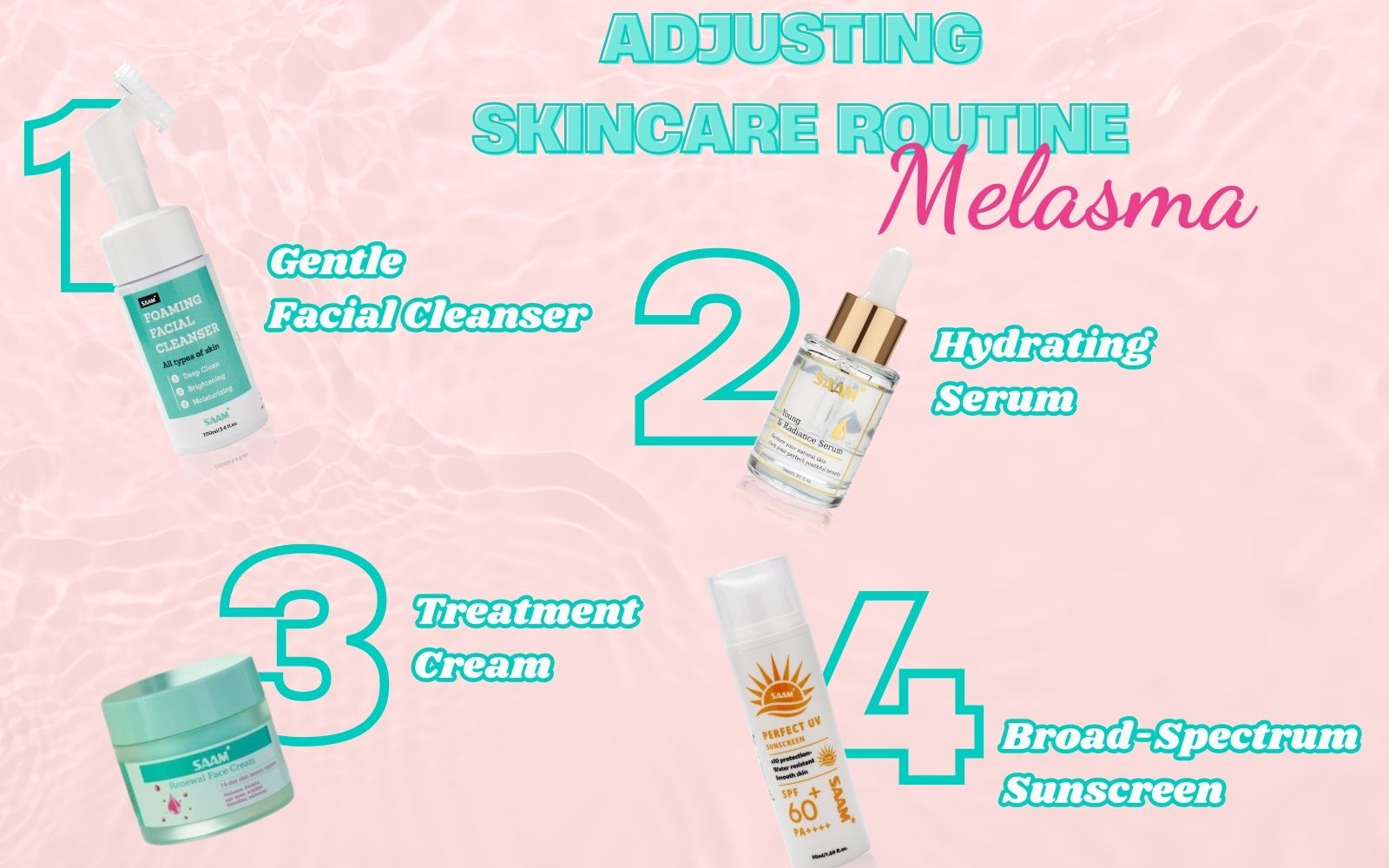
Adjusting skincare routine for melasma
4.2. Skincare Tips to Reduce Pigmentation
To fade uneven skin tone, it’s important to follow a consistent and scientific skincare routine. Here are some suggestions:
- Use a skin-brightening product, prioritizing active ingredients like Vitamin C, Niacinamide, Kojic Acid, Arbutin, Alpha Arbutin, Tranexamic Acid, choosing a concentration suitable for skin type and severity of your pigmentation to achieve even skin tone and avoid irritation
- Exfoliate regularly with AHA/BHA, starting with a frequency of 1-2 times per week, gradually increasing to 2-3 times per week as skin gets used to it, avoiding over-exfoliation which can cause irritation and combining with moisturizer to soothe skin
- Hydrate and repair skin by using products with Hyaluronic Acid to deeply moisturize skin, Ceramides and Peptides to strengthen skin’s barrier, and repairing serum with Centella Asiatica, Panthenol, or aloe vera extract to soothe inflammation
- Don’t forget to apply broad-spectrum sunscreen daily, in addition to physical sun protection with wide-brimmed hats, sunglasses, long-sleeved clothing, and umbrellas, and limit sun exposure during peak hours from 10 AM to 4 PM
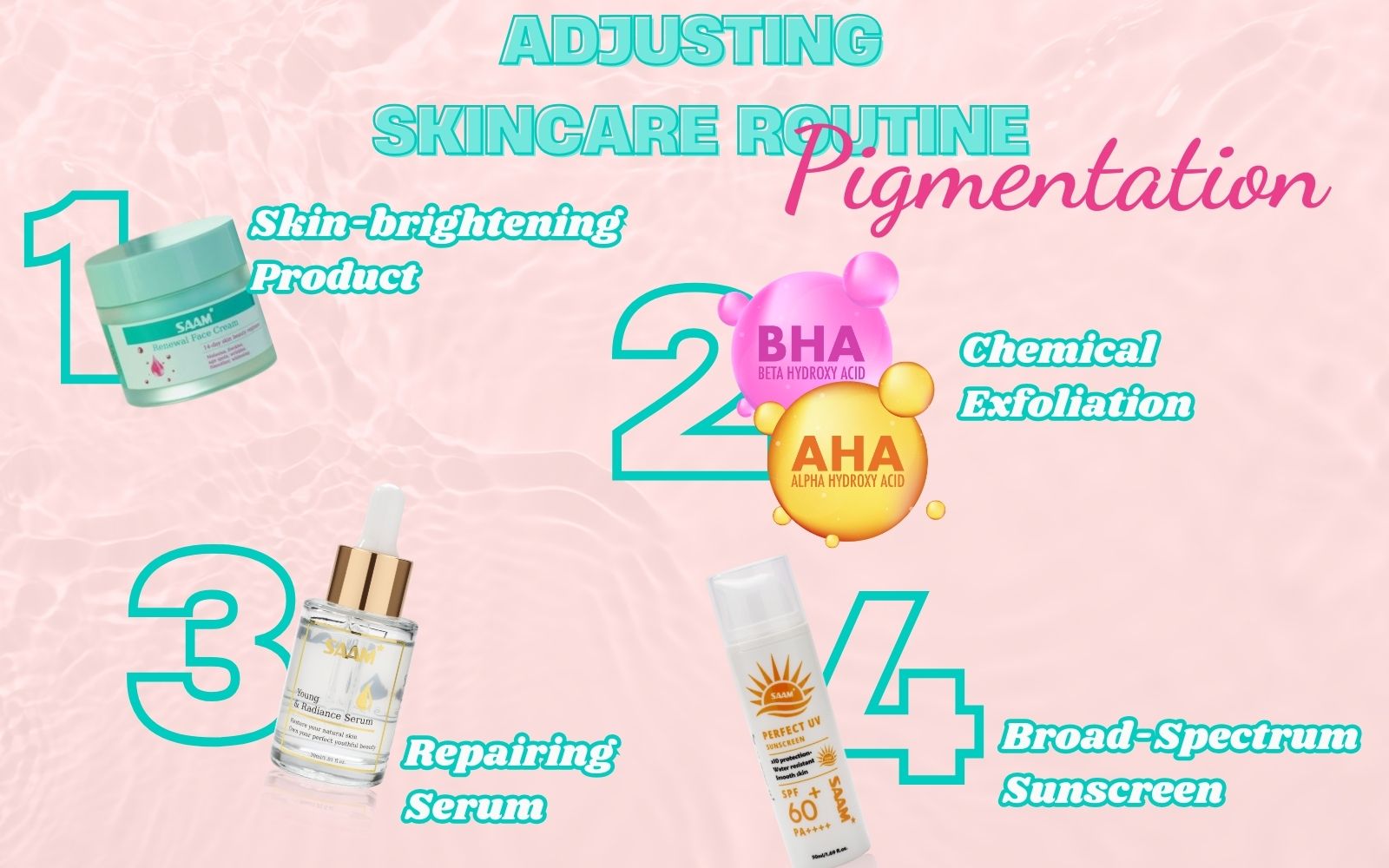
Adjusting skincare routine for pigmentation
Melasma and pigmentation can be challenging, but with right knowledge and skincare routine, you can achieve a radiant and even complexion. Follow SAAM on this website, or official social media like Facebook, Instagram for more skincare tips and information!
